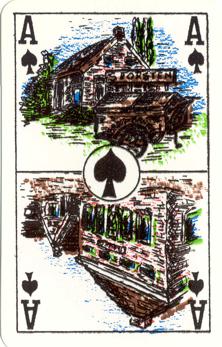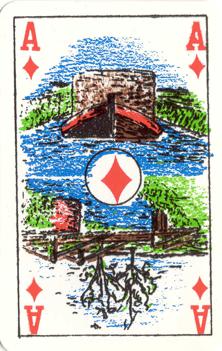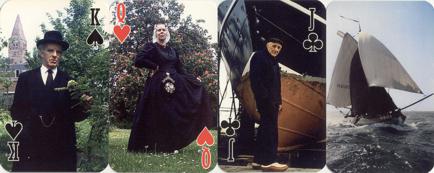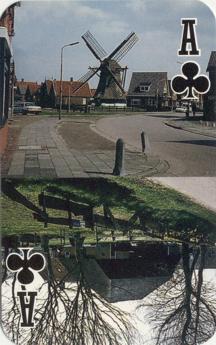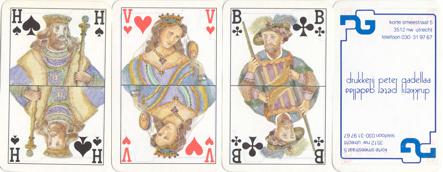 |
In 1978 the Peter Gadella printing office designed, printed and published this deck with a truly "Dutch" pattern and of course scenic aces too. Although double ended, both images are identical on each ace. They show rural scenes from the province of Utrecht. It came in 2 editions, 500 decks in total. In the second edition the backside of the cards got a plastic coating too, making them easier to shuffle and play with. |
 
  |
|



